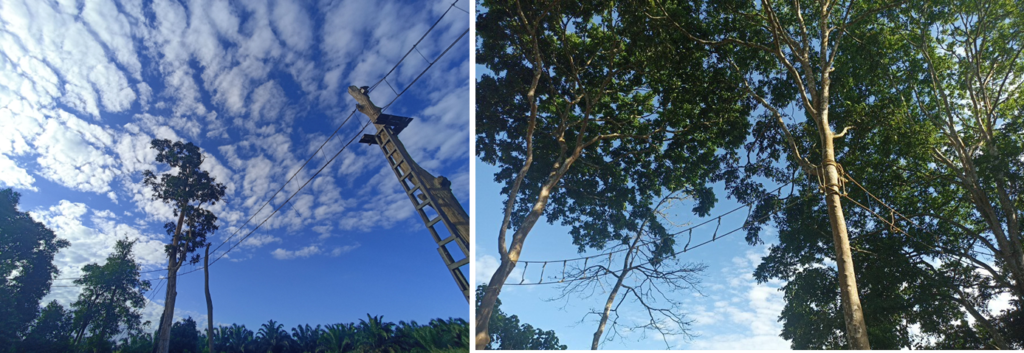Orangutan Population Monitoring
The SHE Department’s Section Conservation collaborated with Dr. Yaya Rayadin from the Ecology and Conservation Center for Tropical Studies (Ecositrop) to conduct orangutan population, distribution and habitat quality surveys in the PT Bima Palma Nugraha conservation area from 11 – 17 April 2022 and from 6 – 11 June 2022.
Based on the 2022 Orangutan Population, Distribution and Habitat Viability Assessment in PT Bima Palma Nugraha Palm Oil Plantation and 2023 in PT Bima Agri Sawit by Ecositrop, it is estimated that there are 40 Bornean orangutans (Pongo pygmaeus) living in 715 Ha of habitat in PT BPN and 64 Bornean orangutans (Pongo pygmaeus) living in 1,102 Ha of habitat in and around PT BAS.
Orangutan conservation efforts towards a better direction have been shown by the establishment of an Orangutan Task Force equipped with competencies in handling OU conflicts, the construction of orangutan bridges (artificial corridors), planting food trees such as Fig / ficus, socialisation to employees and surrounding communities, monitoring using camera traps.

Bengalon River Walk to Observe the Distribution of OU Nests along Riparian Areas

Camera Trap Photos of Proboscis Monkeys in Artificial Corridor 1
This survey marks an important milestone, as it is the first time PT BPN has worked with Ecositrop, which is experienced in orangutan research and management. The survey team consisted of nine researchers from Ecositrop led by orangutan expert Dr. Yaya Rayadin and eight officers from PT BPN’s Conservation Team.
The methods used in the orangutan population distribution and habitat survey included (1) aerial survey using visual camera drones and thermal drones, (2) rapid survey, (3) nest inventory using the transect survey method, and (4) trail camera installation.
The population density survey followed standard nest counting procedures. The results indicated the presence of a significant number of orangutans with an estimated 33 individuals. This represents a density of approximately 4.32 individuals/km2. From the results of the ground and aerial transect surveys, the estimated orangutan nest density was 950.5 nests/km2.


We use Thermal Drone Technology to Detect Orangutan Presence
In 2023, the company collaborated with Ecositrop to conduct a scientific study on the distribution, population and habitat conditions of orangutans in PT Bima Agri Sawit where the Karangan and Muara Bulan conservation areas within the PT BAS concession are potential habitats for various protected species, especially orangutans. Among the efforts to protect the OU in PT BAS is by conducting pringgan management and continuous monitoring / patrols by specialised officers and the formation of a trained OU Task Force.

Monitoring Post and Task Force Team for Orangutan Monitoring in PT BAS Conservation Area
ORANGUTAN CONSERVATION ACTION STRATEGY STUDY RESULTS
Following the results of the previous Orangutan Conservation Strategy Action Study (SRAK-OU) conducted by Ecositrop, a biodiversity and ecological conservation study centre in Samarinda, East Kalimantan, to build wildlife corridors, by 2023 the Company had built 2 of the planned 3 wildlife bridges equipped with camera traps to monitor wildlife movements.
The construction of wildlife bridges as one of the anticipatory measures of human-wildlife conflict cases is implemented by the Wildlife Conflict Handling Task Force (Satgas) in the Bengalon and Karangan landscapes, which was formed by the Company through its subsidiaries in collaboration with the East Kalimantan Resource Conservation Centre (BKSDA).

OU Corridor Bridge at PT BPN